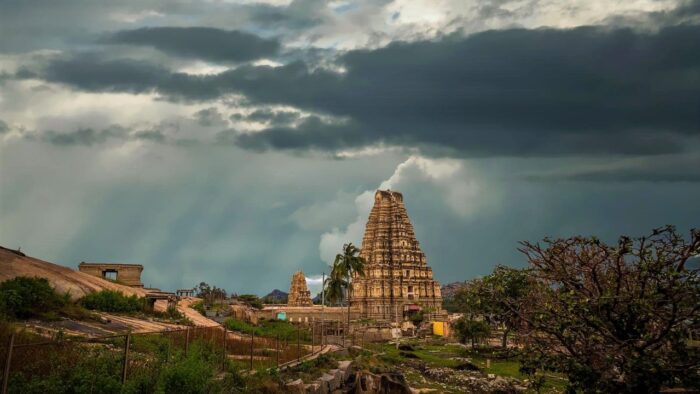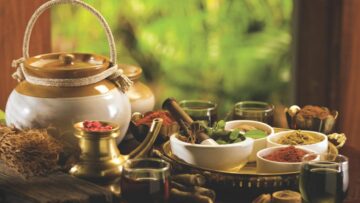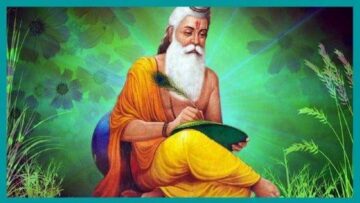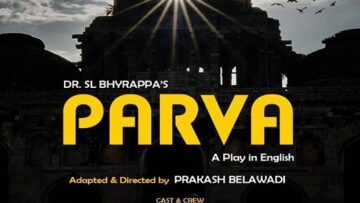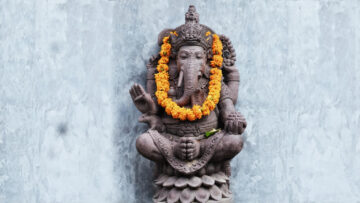The experience of Beauty (Soundarya) is very central to our lives. Every Civilization has a perspective of Beauty which is drawn from its basic philosophy. They also define a purpose for it – what a man derives from the experience of such Beauty. Psychologically too, it is possible to view every act as a performance to experience Beauty. This paper provides a philosophical account of this psychology.
Man experiences Soundarya through the following five Experiences – which are a consequence of our acts.
- Soundarya created by Consummatory, Possessive (Consumption) Experiences
- Soundarya created by Performative Experiences (Intellectual & Kinesthetic)
- Soundarya created by Aesthetic Experiences
- Soundarya created by Ritualistic Experiences
- Soundarya created by Yogic/Renunciatory Experiences
Our Senses, Manas, Buddhi, Ahamkara, Chitta, Hrudaya work differently in each of these. A good architecture of life must account for these experiences, accommodate them and compose them for a good and sustainable life. To compose them meaningfully and productively, you need a good philosophy.
Different Civilizations have developed a different perspective of Beauty. These differences are largely the outcome of the following questions:
- Which of the five experiences do they anchor their Civilization around
- How they understand/formulate the inter-relationship between these experiences
- What is the emphasis they accord to each of them in their architecture of life
- How do they translate the understanding and composition into an on-the-ground architecture of life
- What instruments have they crafted in order for their civilizations to realize these experiences
This article presents Bharateeya Sanatana Dharma’s response to the above questions and the challenge within. This represents our Philosophy of Beauty (Soundarya). The article also presents how this Philosophy of Beauty depends on a more fundamental Philosophy of Life consisting of Cosmology, Time and Change. The article is not concerned with the artistic/aesthetic detail of the experience of Beauty, though. Its fundamental concern is its position in the Architecture of Life and the role it plays in the overall organization of life and the purpose there-in.
The Philosophical place of Soundarya in the Bharateeya Parampara
In the Bharateeya Drishti, the Purusharthas, Srishti-Sthiti-Laya and Rta form the Philosophical Fundamental, as explained in a previous paper. Our perspective of ‘Soundarya’ (Beauty) emerges from within this Cosmological Universe.
At a high level, the Bharateeya perspective of Beauty can be summarized as presented below:
- The purpose of everything in life is to attain Mukti/Moksha – the highest of the four Purusharthas. The Other Purusharthas – Dharma, Artha, Kama strive for an individual to achieve Mukti.
- This state of being one with the Universe, to attain Mukti, also results in the highest experience of ‘Ananda (Joy)’ – the Brahmananda or Sachidananda. Rather, Ananda is the very state of attaining Mukti.
- That is the highest form of Ananda that sustains itself without the need of anything else. The purpose of life is to achieve that Ananda. Few achieve that ultimate.
- Soundarya (Beauty) is that medium/instrument through which you experience Ananda. All acts/performances of life in the realm of Dharma, Artha, Kama have / should have their own experiences of Beauty, so that they lead to the final experience of the highest Ananda. Thus, every act of life should be a microcosm / smaller version of the highest Ananda or must result in that.
- Not everybody achieves Mukti and the highest Ananda. What then is the purpose of this Soundarya? Our Dharma, Artha, Kama indulgence in the path of Mukti should bring us lower forms of the same Ananda. They must be fulfilling, enriching and worthy of pursuing. The Architecture of Life should be such that it enables this pursuit and experience. Our journey towards Mukti should be studded with forms of Ananda that encourage, nudge and move us in the path of the highest Ananda. Our experience of Beauty at each stage must work towards the highest form of Ananda. Other forms of Beauty must be rejected. That is our perspective of Beauty i.e., Soundarya. In this way, potentially, every act of our life ought to have a component of Soundarya towards the highest form of Ananda. Every act must become an elevated Karma.
- Thus, the Bharateeya Parampara considers the experience of Beauty as a fundamental element of life.
As we have seen in our previous paper, the Mukti, which offers the highest Ananda, is also the state of Sthiti. Thus, the Ananda is part of the very foundational philosophy of Bharateeya Parampara i.e., Srishti-Sthiti-Laya. Thus, the larger Cosmology of Life and Philosophy enables a very unique definition of Soundarya (Beauty), Ananda (Joy) and Anubhuti (Experience) in the Bharateeya Parampara.
Soundarya and the Architecture of Life in the Bharateeya Parampara
In the previous section, we saw the centrality of Beauty in our Civilizational Philosophy. It is an integral part of the fundamental pursuits of life – the Purushartha. It is equally associated with every pursuit of life – Dharma, Artha, Kama, Moksha and it is anchored around Moksha/Mukti – the ultimate pursuit in life. This anchoring around the highest pursuit makes a difference in two ways:
- It makes the experience of Beauty respectable, honourable at each stage in the Dharma, Artha, Kama indulgence.
- It creates the necessity to experience Beauty at each state in the Dharma, Artha, Kama indulgence as this experience becomes necessary to keep us motivated to reach the final destination of Ananda at Mukti.
- This also results in the tempering of the experience of Joy at each stage. All joy, hence the Beauty, at each stage ought to enable the journey towards the final i.e., Ananda at Mukti. This results in a significant tempering of Beauty at all levels. It regulates the pursuit of Beauty creating a sense of choice and the ability to make those choices. Hence, every Joy and every instrument that creates Joy is not pursued.
How the Bharateeya Parampara achieves this is the crux of this article. The answer lies in a unique composition of the Beauty experiences that Bharateeya PArampara achieves. A summary of this is as follows:
- The Parampara factors all the Five Soundarya creating Experiences by aligning them with the Purusharthas. Hence, their pursuit is encouraged and assured.
- The Purushartha alignment results in a balanced pursuit of all the Soundarya creating Experiences. No Soundarya Experience overrides the other and nothing comes in the way of realizing the highest Ananda.
- The architecture and design of life is such that Soundarya creating Experiences (their instruments) are equally accessible by all in the society in the summary of time. It is maximized for the society but limited for each individual. Only the highest form of Anand is unabashedly available for all.
Life is organized so that everybody has an equal opportunity to strive for it. The Purushartha provides a framework for the same. With these as the principles of organization, let us understand how Bharateeya Parampara looks at each of these Soundarya creating Experiences in order to understand how these principles operate, how the Experiences creating Soundarya are composed and prioritized by the Bharateeya Parampara and integrated into the Purushartha architecture.
Consummatory/Possessive Experiences
The need to possess, the need to consume material and the joy resulting from that is the most fundamental human experience. Any Philosophy of Beauty must accommodate for it and temper it. Driven by the senses, the joy can neither be negated nor denied. Neither can the joy be glorified for that is the reason for a million clashes in the history of humanity. The Purushartha framework accommodates this through Artha and Kama. In the philosophy of Srishti-Sthiti-Laya, Srishti is part of Sthiti. Srishti is the leela of Bhagavanta – playful nature. Srishti fulfills itself through the Kama (Desires) and Artha (Needs). Kama and Artha accommodate for the Consummatory/Possessive Experience in the Purushartha. Thus enters Soundarya and Ananda into the basic framework of Purushartha.
The Consummatory/Possessive Experience requires material. This requires Creation. Creation, though, is a process and path. As a consequence, there ought to be Beauty in the Path of Creation as well. Since, everything must eventually lead to the highest Ananda and hence must have lower forms of it, the Path of Creation cannot be void of it. We shall cover in the next section.
There is a complication in this path, though. Consummatory/Possessive Experiences are related to our 5 Physical Senses. The consumption/possession feeds into our 5 senses. The more you feed the more the senses seek, unless special care is taken. The senses are vulnerable to the Arishadvarga. One can forever get caught in this vicious cycle. Further, this relentless seeking of the material results in clashes between individuals and communities, for the resources are limited. Relentless consummatory and possessive indulges may lead to totalitarianism. Thus, Consummatory/Possessive experiences alone can never lead to the highest form of Ananda by themselves. This wisdom in the Bharateeya Parampara has led to adequate leverage of other forms of Beauty so that one is not caught in the Consummatory/Possessive Experience forever.
The Performative Experiences
Man lives through various performances in life. Some performances are required for mere existence. However, Performance is a psychological necessity too and stands independently seeking beauty through them as well. Hence, any thriving Civilization ought to create and sustain a set of Performance Experiences that uniquely represent the same. In addition, as we saw, Consumption requires the Creation of Material – which is a Process or a Path and hence requires Performance. Thus, the seeking of Consummatory Beauty also leverages another fundamental aspect of human life – that is the Performative element.
Bharateeya Parampara recognizes both these dimensions of the Performance and binds the two. It builds the Performative Experiences around Consummatory Experiences so that the latter is enhanced and tempered without the 5 senses driving them in excess. Life is organized around communities. Each community indulges in specific performances around specific creations. This community life and a sense of ownership gives them the space to evolve Performance Experiences around this Creation for the Anubhuti of Soundarya. This, in turn, tempers the Creation and ensures no excess. That, in turn, controls excess in the Consumption.
The wisdom is in recognizing that man may live with less consumption but not without a rich performance. ‘To Do’ something is a critical aspect of our life and is also an integral part of the Srishti. Creation happens through performances and Consumption/Possession only comes later. We enjoy throwing stones, typing words, speaking, singing, running, throwing and building. All civilizations have provided for a very good organization of our performances. However, when not directed by philosophy, performances tend to be destructive and lead to higher order seeking of consummatory experiences.
However, there is a risk. Excessive indulgence in performative experiences leads to absolute insensitivity towards other individuals and society. When we seek beauty in pressing the trigger of a gun, we become destructive and move towards becoming Rakshasas. Worse, we may not even be aware of our Rakshasa tendency of seeking performative beauty in a harmful way.
Nevertheless, without sufficient emphasis on Performative Experiences a Civilization cannot be creative. Without sufficient Creation, a Civilization tends to become irrelevant or self-destructive. Civilizations need a ‘Path of Creation’ through which material is created through which performative and consummatory/possessive instincts are satiated.
The Aesthetic Experience
Bharateeya Parampara has provided a solution to this problem of the excess in Performative indulgence discussed in the previous section. The ‘Path of Creation’ through performance and consumption of material is enhanced by the Aesthetic dimension. Psychologically, this dimension has the following effect on humanity:
- It is designed for experience of beauty with lesser need for the material
- As a consequence, it controls our performative and consummatory experience indulgence
In summary, greater the Aesthetic experience, lesser is our need to possess and consume material. In addition, it results in a balanced performative indulgence that is less destructive.
However, even the Aesthetic experience is not an absolute guarantee from the excessive indulgence of the 5 senses. It is still susceptible to the Arishadvarga. In particular, it feeds into the Aham, Mada and Kama. It is still operating in the realm of Artha and Kama but on a higher plane. It transforms us from being barbarians and takes us towards a sophisticated civilization for a better life. But Civilizations have fought and ended themselves or have collapsed by themselves by merely operating in that plane.
In addition, it is not easy for the Aesthetic to be created by all even though it can be experienced by all. Naturally, this creates pockets of excellence, aristocracy and is potentially an inequality creating instrument. Of course, Bharateeya Parampara resolves this through the organization of community life so that everybody within a community has reasonable access to the Aesthetic created within. Community, in fact, is an equality creating instrument of Bharateeya Parampara.
Nevertheless, it provides a far greater leap towards the highest form of Ananda.
The Ritualistic Beauty
There is a limitation to seek beauty in consumption of the material, performance and its aesthetic dimension. It is costly, complex, conflict-ridden and unsustainable. The genius of the Bharateeya Parampara is that, in its quest for finding a sustainable way of experiencing Beauty, it understands this problem and seeks to resolve them through instruments that are seamlessly available to the society. In addition, it has anchored the Civilization in those instruments so that our indulges are productively tempered.
Bharateeya Parampara realized that unless we redirect daily life towards Brahmananda – the ultimate beauty, our quest for beauty will continue to remain within the realm of consumption and possession. The daily life itself had to be elevated towards the experience of the ultimate. In addition, there ought to be a way in which the indulgence itself does not need material and does not result in hunger for the material. An aesthetic indulgence that was very less dependent on consumption, possession, performance. The solution to the problem was Rituals.
The much maligned Ritual is actually the greatest innovation of Bharateeya Parampara. All cultures have Rituals. It is only the Bharateeya Parampara that has an Architecture of Rituals that covers all aspects of life with an overall integrity.
- Our Rituals have a definiteness in the experience (and hence in the joy) they bring to us and a philosophical elevation in the way they elevate overall life.
- They are not material intensive and hence greatly sustainable.
- They are equally accessible to everybody who meaningfully seeks it. This form of experience and the resulting joy is available infinitely. Hence, it does not lead to competition by scarcity.
- Rituals are emancipatory for the performing individuals. One is very less dependent on others for their Rituals. One’s pursuit of Beauty is not at the mercy of anybody else’s. Thus, at a certain level, the individual is autonomous.
- In addition, Families, Communities autonomously can pursue this dimension of Beauty with least dependence on others.
This is how Bharatavarsha evolved a decentralized way of life. It is this experience of Beauty in daily life through Rituals covering all aspects of life that sustained our civilization through ups and downs for millennia. What does this form of Experience and resulting Joy bring to a civilization? The answer lies in the definition of a Ritual.
A Ritual is an instrument that helps individuals and societies navigate every change and manage every performance by connecting them with the Supreme. This definition results in the following.
- Since nature changes every day, every fortnight, every month, every year and so on – unique rituals are aligned with each change thereby creating avenues to experience Beauty at each point. Thus, the Ritual elevates activities of our daily life and connects it with the Supreme. Through the Ritual, one can pursue and be connected with the Rta. In fact, the English word Ritual has its roots in the Sanskrit Rta, through its Roman ancestor Ritus.
- Since it leverages every change that occurs in Nature, thereby in our lives, it creates an opportunity to experience Beauty at all times in an autonomous way. This reduces the excessive indulgence in Performative and Consummatory Experiences. It also helps us navigate every Change smoothly and experience Beauty in that process, which otherwise could be destabilizing.
- Since it manages every performance, the Ritual enhances our Performative Experiences, Aesthetic Experiences, Path of Creation and controls our Consummatory experiences.
- Thus, it connects us with the very Rta (Universal Cosmic Order). The very experience of Beauty comes from this connection with the Rta. This results in progressing in the path of Mukti.
- In addition, it helps families, Kulas, Communities and the Rashtra create common experiences, thereby an identity and bind oneself to it. This enables the sustenance of a collection of Rituals to navigate change, experience the unique Path of Creation and pursue Mukti.
Thus, a sophisticated design of Ritualistic experience is the hallmark of a great Civilization.
The Yogic/Renunciatory Experiences
Finally, the Renunciation. The experience of the Ultimate is finally realized only through Renunciation. The Ultimate is also the highest experience of Beauty. But what of the path itself? If that is void of Beauty how are we to pursue Moksha? Is that only going to be one of painful hardships? Thankfully, our ancestors have carved Renunciation-Paths full of unique Beauty. They present forms of Ananda that are just a level lower to the highest, but progressively leading to the latter. This experience not only does not feed into the senses and Arishadvarga-s, they also move us away from the need for beauty through consumption & possession. It also elevates the performative and aesthetic dimensions. They have their own exclusive set of Rituals for Renunciation.
The real genius of Bharatiya Parampara is not only to recognize the experience of Mukti and creating paths for the same, but also to stud this journey with the experiences of beauty towards the final destination of Brahmananda. The Parampara has ensured that these paths are available to all in all communities. In addition, other Experiences of Beauty, consummatory/performative/aesthetic/ritualistic, are aligned towards these paths to Renunciation. The Parampara has instilled a faith in not only the destination of Mukti but also the experience of Joy as milestones in this journey. The Renunciatory Experiences and the resulting joys have ensured that our indulgences in all other Experiences of Beauty are controlled and tempered productively.
Thus, an architecture of instruments to experience beauty at all levels is the achievement of Bharateeya Parampara. This pursuit has been transformed into disciplines, traditions, communities, customs, practices and pursuits. In addition, a sophisticated education system was built that was both immersive and scholarly to transfer Jnana and Shraddha from one generation to another.
The Crisis of Modernity
It is very clear that the system architecture explained above has suffered a break from its natural transfer to our generation. We have gravitated towards the consummatory and performative experiences a lot more than desired. We need to characterize this crisis in summary. This crisis is a confluence of Colonialization, Industrial Revolution and Modernity. However, it is significantly accentuated by Modernity, philosophically speaking.
The crisis of Modernity is that:
- We have very little faith in the Ultimate experience of Beauty – Brahmananda.
- In addition, we have misunderstood the Ritual as merely symbolic or a dogmatic indulgence without any specific value to the society.
- As a result, all our pursuit of Beauty is in the realm of consumption, possession and aesthetic.
- The aesthetic has become subservient to consummatory/possessive and performative Soundarya.
- There is a misconception that excessive performance leads to good creation of material and infinite opportunity for consummatory Beauty. Thus, Performative beauty has acquired an independent value.
- In addition, the creation of the material/possession and aesthetic has also become void of the Aesthetic dimension.
All this is leading to totalitarianism. This is costly and unsustainable. The Industrial world has made output more important than the process and hence beauty is pursued only at the consumption/possession level. Humanity spends more time in the process of creation and not consumption. Anchoring the experience of Beauty in the Path can bring a whole lot of balance. The experience of Beauty has diminished there. The net result is that we have a world where the experience of Beauty is limited. Psychologically speaking, this leads to a life full of conflict and insecurity.
Restoring this in the Modern Industrial World is now a herculean task at hand. That is our challenge.
Image Credit: Picxy.com/prudhvichowdary
Disclaimer: The opinions expressed in this article belong to the author. Indic Today is neither responsible nor liable for the accuracy, completeness, suitability, or validity of any information in the article.

